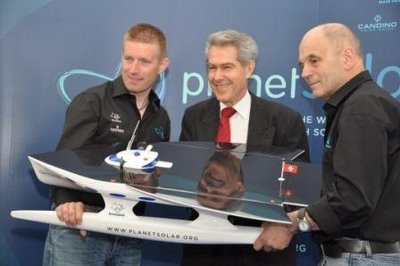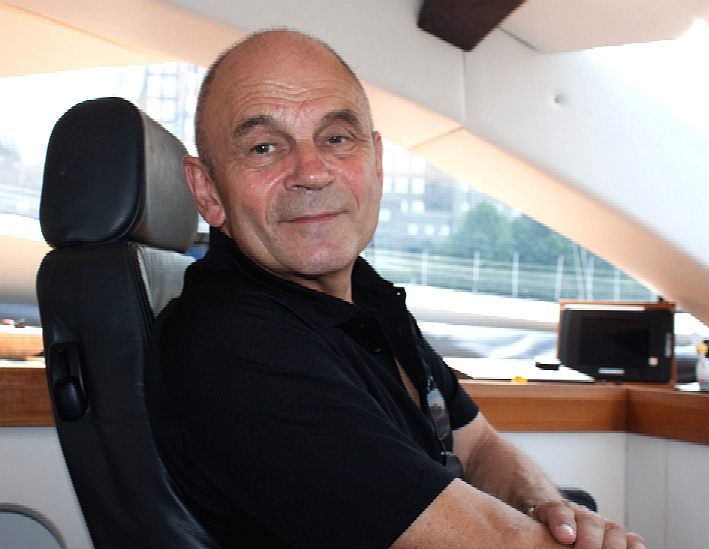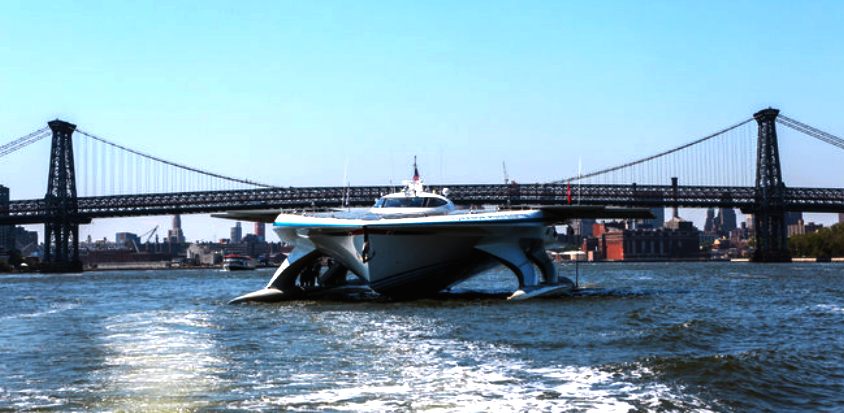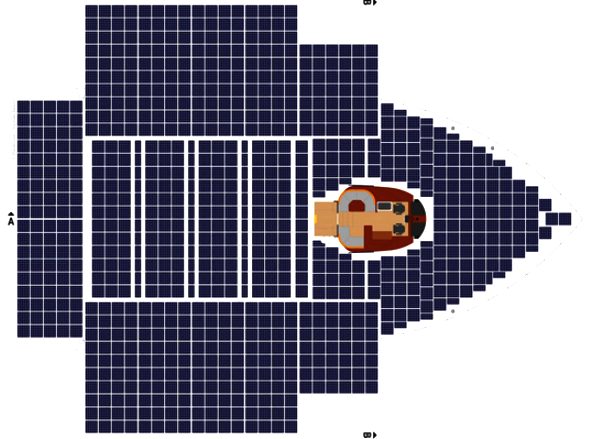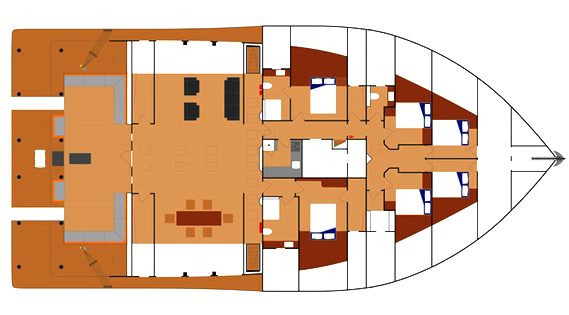|
SOLAR POWERED OCEANOGRAPHY - TURANOR PLANETSOLAR
|
|
|
The 31 meter (100 ft) Planetsolar uses over 500 square meters of solar panels to generate 93 kW, which drive one of the two electric motors in each hull. The boat's hull has been scale tested in wind tunnels and has been tank tested to determine the performance of the hull.
Turanor Planetsolar model design before build
The research cruise, with five crew members and up to four researchers aboard, began in Miami several weeks ago and will stop in Newfoundland and Iceland as it tracks the northeasterly current. The voyage is expected to end in Bergen, Norway, in August.
Last week, the boat stopped in New York City for a few days on its way north. The squat carbon-fiber craft, its wide and flat top deck dominated by the photovoltaic array, looked a bit out of place among the luxury yachts and other more conventional nautical playthings docked at a marina near the city’s financial district.
Captain Gerard d'Aboville aboard the Turanor Planetsolar
In some ways the boat is suited to research. Being completely powered by the sun — the high-efficiency solar cells charge the batteries that power electric motors connected to the craft’s twin propellers — it produces no emissions of carbon dioxide or other gases that could contaminate air samples. And the boat has no problem going slowly, if necessary, as it samples the water — average speed is a sluggish five knots.
“But clearly, it’s not a research vessel,” said Bastiaan Ibelings, a microbial ecologist at the University of Geneva who is working on the project. The catamaran had to be outfitted with research equipment, including a “ferrybox,” originally developed for ferries in the Baltic Sea, that constantly records the temperature, salinity and other characteristics of the water the boat is passing through. It also has a “biobox,” developed by the university’s applied physics department, which uses a laser to analyze the number and type of aerosols in air samples.
The issue of ocean-generated aerosols — solid or liquid particles suspended in the atmosphere that can have an impact through cloud formation, reflection of sunlight and other processes — is a relatively new one in climate science, Dr. Beniston said. “We suppose that the ocean must be a fairly large contributor” of aerosols through the action of waves and wind, he said, but their abundance and how different types are distributed are fairly unknown. “Their exact role is still open to question,” he said.
The Gulf Stream is one of the most intensely studied ocean currents in the world, but Dr. Beniston’s plan is to examine some of its smaller-scale structures. These include eddies, swirling offshoots of the current (which, although they are smaller in scale than the entire Gulf Stream, can still be 200 miles or more in diameter). Eddies tend to have more upwelling of colder, deeper water than the Gulf Stream itself, so one goal is to see whether different water conditions produce different kinds of aerosols. With his plankton research, Dr. Ibelings wants to see whether the water conditions in eddies result in greater or less biological diversity than elsewhere.
The modifications to the catamaran — which also included new propellers and some remodeling of living quarters to provide work space for the researchers — were undertaken at a French shipyard after the boat ended its 19-month, 37,000-mile circumnavigation in May 2012. That voyage was intended more to demonstrate the general capabilities of solar energy than the practicality of solar-powered ships. (After all, vessels powered efficiently by alternative energy have existed for centuries. They’re called sailboats.)
“It’s an ambassador for solar energy,” said
Gérard d’Aboville, Planetsolar’s current captain. “But I’d have to be crazy to say, let’s order 20 boats like this.”
The PlanetSolar is a solar-powered vessel built by Knierim Yachtbau, in Kiel, Germany for Switzerland-based PlanetSolar. It is the biggest solar boat ever built. The solar powered craft is topped by a large array of
photovoltaic
panels.
COMMENT
The British 'Bluefish' contender is somewhat longer at 42.5 meters (140 ft) yet considerably lighter with just 300 meters of solar panels giving more than twice the power to weight ratio. The other key features are the deployment solar energy harvesting devices (panels, etc) robotically and fully autonomous navigation control options for hydrographic and oceanographic duties. The fact the Planetsolar is being deployed in such manner is proof of concept - except that the Bluefish consortium are aiming to extend that concept into the realms of fully robotic automation.
LINKS
http://www.nytimes.com/2013/06/25/science/solar-boat-harnessed-for-research.html New York Times solar boat harnessed for research http://au.businessinsider.com/oceanographic campaign to study the gulf stream http://www.ship-technology.com/projects/planetsolar/
Design concept - Raphael Domjan - PROMOTIONAL TOUR 2012
English - Swiss - French - History - Links - Homecoming
2013 - London - Paris - Rio de Janeiro
The captain of a solar powered ship take on pirate whalers with a $Billion dollars riding on the conclusion.
|
|
|
This website is Copyright © 2013 Bluebird Marine Systems Limited. The names Bluebird™, Bluefish™, Solar Navigator™, Utopia Tristar™ and the blue bird in flight logo are trademarks. All other trademarks are hereby acknowledged. The color blue is a protected element of the marks.
|
|
